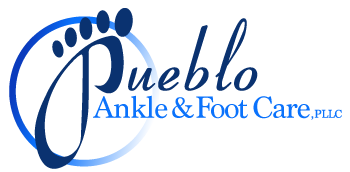Description
If you’ve ever felt and poked around your feet, you may have noticed that feet can be kind of bumpy. Not as bumpy, perhaps, as a mountain road that has just come through winter, but there’s definitely a few spots that feel pretty prominent, like the bones in your ankle, or your big toe joint.
Sometimes, your feet can become even more bumpy than usual. Foot bumps are often made up of bony prominences in your foot. They have several causes or origins: they may be congenital (extra bones in the foot usually form during infancy or childhood) or they may come about because of deformities in the foot or injury. They can also show up pretty much anywhere (kind of like that person you’re trying to avoid), so the top, bottom, inside and outside of your foot are all susceptible.
These foot bumps aren’t always problematic. In fact, many people may experience no discomfort or other problems from them whatsoever. Unfortunately, a few bumps have turned down a dark path, and cause you as many tribulations as possible. Some can interfere with the proper function of your joint (an extra bone may be embedded in the joint, or the bones forming the joint may have grown), or may cause tendons to become weak. They might make it harder to find shoes that fit (shoe designers don’t often take bunions into account, for instance), or might simply swell up and hurt like the dickens.
Following are some common bumps (or bump-related problems) that are made up of bony protrusions (although this list should by no means be taken as comprehensive):
- Hallux rigidus – Involves a bony prominence of the big toe joint
- Accessory Ossicles (Extra Bones) – These small extra bones can show up numerous places, although a common one is the accessory navicular (on the inside of the foot). It may weaken the tendon holding up your arch, causing your foot to become flattened.
- Bunions – May be caused by weakness in your soft tissues. The tip of the big toe begins to drift over to the second toe, making a bump when the joint (where the big toe joins with the foot) juts out. These bumps can rub against shoes and become quite painful.
- Tailor’s Bunion (or Bunionette) – These are similar to bunions, but form on the fifth toe (the pinky toe) at the joint where it meets the foot.
Symptoms
Foot bumps, if painful, are often associated with a few different symptoms. These may include inflammation around the bump (redness, swelling, heat, and pain), particularly if the bump rubs against shoes or is under pressure when you walk. Bony bumps are usually firm to the touch.
Some may affect the structure or motion of your foot. Accessory ossicles (like the accessory navicular) may interfere with tendon function. Bony bumps may also cause limitations in the movement of a joint. For instance, when affected by hallux limitus or hallux rigidus (joint problems in the big toe), you may find it difficult to move your big toe upward (at the joint where the toe connects to the foot) while standing. This will affect the way you walk, which in turn will make the bony growth in the joint more and more prominent, further exacerbating the problem.
Diagnosis
Your podiatrist knows much about the ways of bumps (both the innocent and the guilty ones) and has many methods to determine what your bump is, what caused it, and how best to treat it. He or she will likely ask you about the symptoms you’ve experienced, and will probably perform a physical examination of your foot. Your bump may get prodded or pressed (and you’ve got to admit-you’ve probably done a bit of prodding and pressing of it yourself). Your podiatrist may also use several methods to see inside your foot to get a better look at the internal structure of your bump. X-rays are often used, or your podiatrist may suggest an MRI or other imaging method.
Treatment
The course of treatment your podiatrist recommends will really depend on the type of foot bump you have, what the suspected cause is, and your overall medical condition. However, some common treatments of foot bumps include padding the bump to relieve pressure from shoes and/or walking, orthotics (prescription shoe inserts), a change in shoe-wear, and anti- inflammatory treatments (usually includes medication, immobilization through casts or splints, ice, and prescribed periods of rest). In some cases surgery may be necessary to remove the bump and improve the function of your foot.
